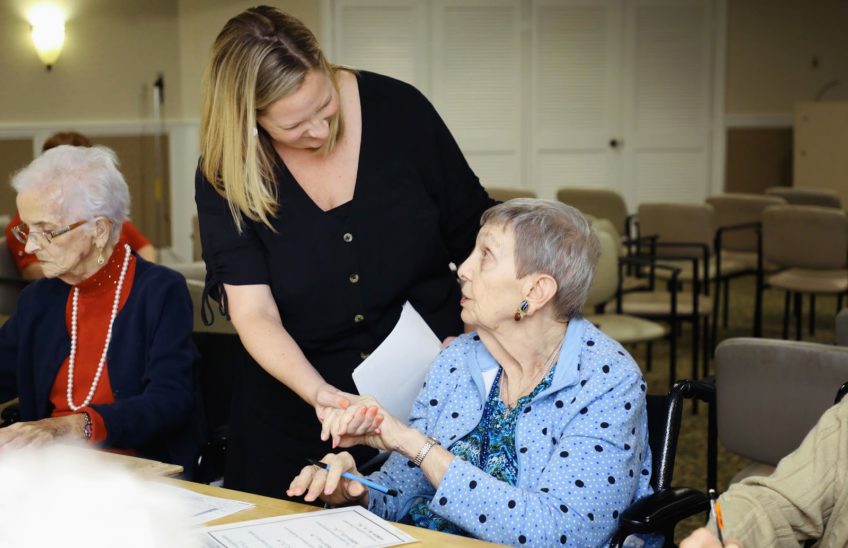Close to 1.4 million Americans are currently living with Lewy body dementia.
Suppose you suspect someone you care about (or yourself) has this disease. You should fully understand the signs and symptoms and how medical professionals arrive at a Lewy body dementia diagnosis.
Patients are much more likely to develop Lewy Body Dementia if they’re over 60 if they have a family history of Alzheimer’s, Parkinson’s, or other forms of memory loss, and if they’re male. The disease can progress quickly. However, the earlier you recognize the signs, the higher the chance you can delay the more severe symptoms for as long as possible.
This post will tell you everything you need to know about Lewy body dementia and the available treatments.
What Is Lewy Body Dementia?
Lewy body dementia (LBD) is a form of progressive dementia that occurs when protein deposits (Lewy bodies) take over brain nerve cells responsible for memory, motor skills, cognition, and more.
When someone is diagnosed with Lewy body dementia, it means that they have both dementia itself and Parkinson’s dementia. Though the two are often conflated, the main difference between LBD and Parkinson’s dementia is easy to understand. With LBD, you notice the cognitive symptoms before the physical ones, where the physical signs appear first. The patient will usually experience mental and physical signs of dementia and decline.
As with most conditions related to memory loss, there isn’t a singular diagnostic test for LBD. Instead, the patient receives a clinical diagnosis based on the medical professional’s memory and motor skills assessment. Your doctor may run blood tests, and brain scans, give you a neurological exam, and ask you memory-based questions. Often, someone is diagnosed with LBD when memory loss symptoms coincide or within one year of physical symptoms.
LBD and Alzheimer’s have a few key differences, though undoubtedly similar. First, an Alzheimer’s diagnosis usually means that the person experiences faster mental decline and memory loss. Additionally, a sudden drop in blood pressure, REM sleep disorder, delusions, and hallucinations are much more common in LBD than in Alzheimer’s.
Now, let’s look at the most common signs of Lewy body dementia.
Signs and Symptoms of Lewy Body Dementia
First, let’s talk about the physical symptoms of LBD.
These symptoms are similar to Parkinson’s. This means the patient will likely experience tremors, slow movements, tight muscles, and difficulty holding onto objects. The distinctive “shuffle walk,” which often leads to severe falls, is perhaps LBD’s most significant physical trademark. The patient may sweat profusely, experience high blood pressure and a racing pulse, feel dizzy, and even deal with digestive problems.
The mental symptoms of LBD are perhaps the most severe. The patient may experience frightening auditory, visual, and even scent-based hallucinations. Many report seeing animals or even people. Others experience tactile hallucinations, thinking something is touching or crawling on them. The patient will deal with confusion, short and long-term memory loss, a shorter attention span, and even problems with spatial awareness leading to injuries. They may feel exhausted but also deal with REM disorders that can cause night walking, sleep talking, and even make them “act out” their dreams. Depression, anger, anxiety, and extreme emotional fluctuations are common.
With LBD, the patient may be able to remember names and faces, recall their past, and function relatively normally one day — while completely falling apart the next. This drastic fluctuation is so extreme that many friends/family members assume the patient is acting or greatly exaggerating their symptoms.
The Stages of Lewy Body Dementia
There are several stages of LBD, and the rate of progression and severity of these stages varies from individual to individual.
The patient may experience REM sleep disorder, visual hallucinations, incontinence, and trouble moving in the early phases. (Often, it can look like the patient is “stuck” and unable to move.) Most of the patient’s memory is still intact here; however, they will get more confused as the disease progresses to the middle stages.
In the middle stage, the patient will start to exhibit signs of Parkinson’s, like tremors, slurred speech, and even extreme mood fluctuations.
In the late stages of LBD, the patient may become resistant to touch. They may be unable to move and speak coherently/intelligibly and even become physically ill. During this phase, they will need constant care.
After a Lewy Body Dementia Diagnosis
It can be challenging to determine how long someone can live with Lewy body dementia, though generally, people can survive anywhere from 5-8 years. Patients can sometimes live much longer, especially with the proper treatment.
Cognitive therapy for dementia is beneficial here. The patient should receive one-on-one as well as group-based mental stimulation. They should work on several cognitive areas, such as language, memory, critical thinking, and spatial orientation.
Music, photographs/pictures, conversation, videos, and animal therapy can strengthen their memories. It’s also essential to develop and stick to a routine every day.
In terms of medication, patients may be prescribed Cholinesterase inhibitors, medicines for Parkinson’s, anti-anxiety/anti-depressant medications, and antipsychotic medications to treat the hallucinations and paranoia.
Where to Get Help for Lewy Body Dementia
We know that a Lewy body dementia diagnosis can be devastating and scary.
However, it’s no reason to give up hope. The earlier you seek the proper behavioral care, the better you or your loved one’s quality of life will be.
Fit Minds, and our team of experts is here to help.
We work with families, seniors, and senior living communities to provide different cognitive therapies and mental stimulation designed to combat the progression of memory loss diseases like LBD and Alzheimer’s. Contact us today to learn more about our 1-on-1 cognitive coaching, group sessions, and more. We’re here to support you every step of the way.

